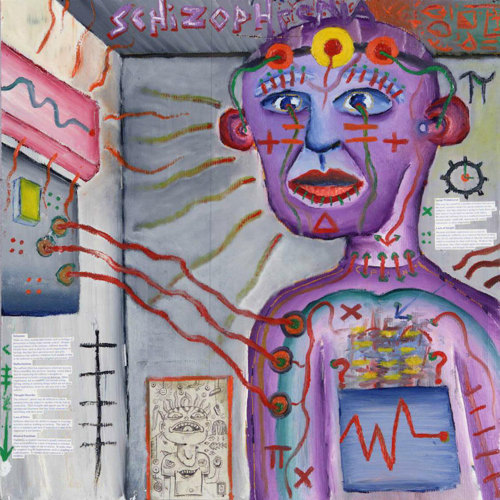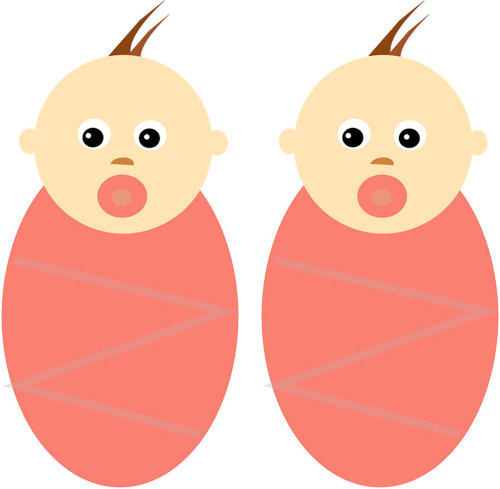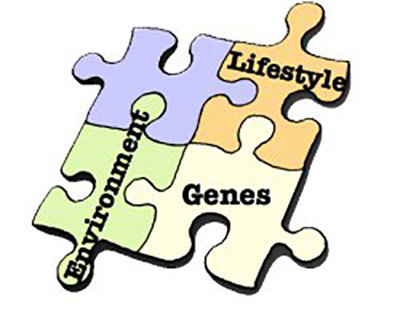
What is the gene for schizophrenia?
October 27, 2016

- Related Topics:
- Genetic conditions,
- Environmental influence,
- Complex traits,
- Neurodiversity
A curious adult from Canada asks:
That’s a tricky question because there isn’t just one gene involved in schizophrenia. Turns out there are a lot of them and none of them seem to cause the illness on their own.
And like many other complex diseases, genes aren’t the whole story either. The environment and how we live our lives plays a big role too. What a mess!
Despite all of that, we know that genes do play a role in schizophrenia. Figuring out which genes is the tricky part.
Keep reading to find out more about schizophrenia and what we currently know about its causes.
Schizophrenia Runs in Families
Schizophrenia is a brain disorder that affects how a person thinks, feels and behaves. Click here to learn more about this condition that affects around 1% of the U.S. population.
Scientists have known for a while that schizophrenia tends to run in families. If your parent has it, the chances for you to have it may be higher than for someone whose parent doesn’t have it.
Often, when something like this happens, genetics plays a role. Which makes sense since you share so many of your genes with your relatives!
But it isn’t always the case. For example, if a large family all live near a nuclear waste dump and they all have cancer, their cancer might not be due to genetics.
All of that cancer may have been caused by the environment around where they live. Or it could have been due to a combination of genes and environment. It’s hard to know for sure!
So how “genetic” is schizophrenia? Scientists try to piece this answer together in a couple of different ways. We will focus on the one that panned out best in this case — twin studies.

Twin Studies
One of the best ways to tell if a complicated disease is genetic is by looking at identical twins.
Identical twins have the exact same set of DNA. If a disease is 100% genetic, meaning that it’s only due to our genes, then if one twin in a pair has the disease, the other twin should always have it too.

Same DNA, same genetics, same diseases. Makes sense right?
But wait!
When we look at schizophrenia, we see that if one identical twin has it, then the other twin has it about 48% of the time1. So it isn’t all genetic! If it were, the number would be closer to 100%.
But how do we know if it is genetic at all? Could it just be a shared environment or something like that?
To see if it is genetic, we bring in a second kind of twins – fraternal twins. These twins share only as much DNA as any two siblings, 50%.
So scientists got together and thought, “If both twins in a fraternal twin pair end up with schizophrenia 48% of the time, just like in an identical twin pair, then genetics probably aren’t very important at all.” But, this is NOT what they found!
Instead, they found that if one fraternal, or dizygotic, twin had schizophrenia, the other twin had a 17% chance of developing schizophrenia too1. This is a lot lower than 48% for identical twins. Since this is lower, we know genetics plays a role too.
So the bottom line is that genetics may place an individual at an increased chance for developing the disease, but it is not the entire answer. The rest comes from the environment. For example, there are certain environmental and lifestyle things that can also affect someone’s chances to develop schizophrenia.
Some of the other risk factors that have been studied are:
- Being introduced to a virus or not getting enough nutrition during prenatal development (when a baby is growing inside of its mom)
- Problems with chemicals in the brain
- Certain drugs during teen years, like marijuana
- Social or family stress when growing up and developing


These risk factors may vary for different people and it’s hard to say for any one person, why he or she developed schizophrenia.
But research is continuing to be done on this – so stay tuned!
Genes Linked to Schizophrenia
DNA is our genetic information. Genes are portions of our DNA that are like cooking recipes for our body. Each of our genes has the recipe for one small part of us.
One gene might tell us that we have brown hair. Another gene might tell our bodies to digest the sugar in milk.
It perhaps isn’t surprising then that lot of genes are involved in something as complicated as schizophrenia. Our brain is a complicated thing and interpreting the world around us isn’t easy!
When there are a lot of genes contributing a bit towards the risk of getting a disease, patterns are hard to see. Throw in the environment and how we live our lives and things get even messier.
Still, scientists have made some progress towards finding these genes.
Earlier this year, scientists completed a “landmark study” for schizophrenia.2 This means that it was very important in helping to better understand the genetics of schizophrenia.
Remember when we said genes are like recipes? Well imagine that the DNA from one person, which contains a whole bunch of genes, is like a cookbook. Let’s say each recipe in the cookbook = one gene.
Using cutting edge technology, scientists in this experiment read through the DNA recipe books of 100,000 people to try and find spelling errors. Just like spelling errors often make a sentence hard to read, spelling errors in a gene make it not work like it should.

Imagine a spelling error in a recipe for a vegetable soup. What if instead of the recipe saying “1/2 teaspoon salt” it said “5 teaspoon salt.” The soup would be way too salty and definitely not taste too great!
When the scientists read the DNA cookbooks for all of these people, one of the things they found was that people with schizophrenia were more likely to have spelling changes in a gene (recipe) called C4, than people without schizophrenia2. C4 is an important recipe for something that helps to make our brains work properly. So it makes sense that a change in that recipe might lead to something like schizophrenia.
C4 is just one of the many genes that have been looked at and thought to be potentially linked to schizophrenia. While there’s a lot more to learn, this was an exciting new discovery in the schizophrenia research world!
Scientists hope to continue to uncover the mysteries behind schizophrenia so that we can better understand how it develops, who may be at higher risk to develop it, and how to give the best medical care to the individuals affected by it.

Author: Danielle Dondanville
When this answer was published in 2016, Danielle was a student in the Stanford MS Program in Human Genetics and Genetic Counseling. Danielle wrote this answer while participating in the Stanford at The Tech program.
 Skip Navigation
Skip Navigation
